Instruction
Simple steps to better chips
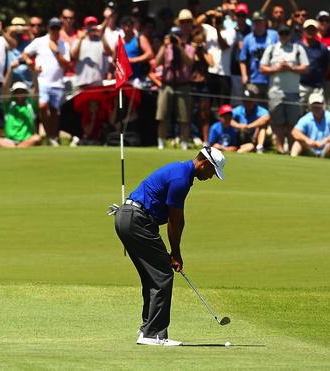
The words “chip” and “pitch” are often used interchangeably to describe shots hit around the green, but they’re actually two different types of shots with distinct purposes.
If you can understand the difference between a chip and a pitch, and more importantly when to use one over another, it can be a quick route to lower scores. Because it’s not always the golfer who hits the best shots who turns in the best score — it’s the one who recovers best from his or her misses.
A chip is a short, low running shot, while a pitch is a short, high shot with little to no run. So when should you chip and when should your pitch?
My rules around the green are as follow: Putt whenever you can, chip when you can’t putt and pitch only when necessary. Why? The degree of difficulty and the predictably of each. Putting is the safest option, a chip shot is the next most conservative play and a pitch is by far the most difficult and least predictable of shots. Pitch shots are beautiful when they come off, but chipping is almost always a much safer option when allowable.
Because most golfer can benefit from learning one shot and learning it well, let’s focus on the chip shot.
First, I suggest learning one basic stroke one using different clubs to execute it. Many one-club chippers need a variety of size strokes to play the various shots, and this is never as consistent as using a variety of clubs. Personally, I use anything from a lob wedge to a 6 iron to play most green side chips.
[youtube id=”_0JFPm9ajO4″ width=”620″ height=”360″]
The Setup
There are a few considerations in set up and swing to play this shot. First the ball position: Any low shot, be it a full or short swing, has to be played a little farther back in the stance to reduce dynamic loft. Also, a back ball position will help you hit down on the shot and insure ball-first contact instead of turf-first contact. So move the golf ball back a little when chipping.
Secondly, take a narrow stance, choke up on the club and stand much closer to the ball. This will put the shaft in a much more vertical position.
Of all the set up problems I see, standing too far from the golf ball is the most prevalent. Remember, a chip shot is a very small swing played with a minimum amount of body motion. Being close to the ball with a narrower stance helps promote that.
Also, put more weight on your front or lead foot (left foot for righties) and be sure the tilt of your upper body is slightly to the left. In other words, do not tilt your spine away from the ball as you would in a full swing.
Lastly you may consider moving you hands slightly in front of the club head, which will de-loft the club. Notice I said slightly, because placing your hands too far in front of the ball can cause you to dig the leading edge into the ground and hit fat shots — even if you make a good stroke.
The Motion
The stroke itself is more of a one-lever motion with very little wrist break. There is a slight wrist hinging on the back stroke of the trailing wrist, but no un-hinging on the way though. This will ensure that the hands stay in front of the club head, or at the very least do not pass the club head.
For many “scoopers” or “flippers,” this shot is a great way to learn a better impact position. Every shot on the ground must be stuck with the shaft leaning a little toward the target, and chipping is nothing more than a miniature version of impact on a full swing. When the right wrist hinges a bit on the backswing, keep it hinged; do not allow it to throw the club head past the hands in the classic “flipped look” coming through. This is the cardinal sin of chipping, and the biggest cause of hitting the ground first or “chilly-dipping.”
Practicing chipping with your left hand only is a great way to feel this little stroke. Keep your weight forward all the way throughout the stroke. A common fault here is to sway or shift weight to the right side in the takeaway. This moves your gravity center off the ball and it is difficult to recover from there, so stay in front.
Finally, it may take a little time to get used to, but the sooner you learn to use a variety of clubs the better your short game will be. Many players immediately reach for their wedges when they miss the green, but that is sometimes a mistake. Bring several clubs and consider all your options. If there is lots of green to work with, a hole location in the back of a long green, or even 30 to 40 yards to the green on a flat fairway lie, try practicing with a 7- or 8-iron. You will be amazed at the results.
As always, feel free to send a swing video to my Facebook page and I will do my best to give you my feedback.
- LIKE6
- LEGIT2
- WOW1
- LOL0
- IDHT1
- FLOP0
- OB0
- SHANK0
Instruction
The Wedge Guy: The easiest-to-learn golf basic

My golf learning began with this simple fact – if you don’t have a fundamentally sound hold on the golf club, it is practically impossible for your body to execute a fundamentally sound golf swing. I’m still a big believer that the golf swing is much easier to execute if you begin with the proper hold on the club.
As you might imagine, I come into contact with hundreds of golfers of all skill levels. And it is very rare to see a good player with a bad hold on the golf club. There are some exceptions, for sure, but they are very few and very far between, and they typically have beat so many balls with their poor grip that they’ve found a way to work around it.
The reality of biophysics is that the body moves only in certain ways – and the particulars of the way you hold the golf club can totally prevent a sound swing motion that allows the club to release properly through the impact zone. The wonderful thing is that anyone can learn how to put a fundamentally sound hold on the golf club, and you can practice it anywhere your hands are not otherwise engaged, like watching TV or just sitting and relaxing.
Whether you prefer an overlap, interlock or full-finger (not baseball!) grip on the club, the same fundamentals apply. Here are the major grip faults I see most often, in the order of the frequency:
Mis-aligned hands
By this I mean that the palms of the two hands are not parallel to each other. Too many golfers have a weak left hand and strong right, or vice versa. The easiest way to learn how to hold the club with your palms aligned properly is to grip a plain wooden ruler or yardstick. It forces the hands to align properly and shows you how that feels. If you grip and re-grip a yardstick several times, then grip a club, you’ll see that the learning curve is almost immediate.
The position of the grip in the upper/left hand
I also observe many golfers who have the butt of the grip too far into the heel pad of the upper hand (the left hand for right-handed players). It’s amazing how much easier it is to release the club through the ball if even 1/4-1/2″ of the butt is beyond the left heel pad. Try this yourself to see what I mean. Swing the club freely with just your left hand and notice the difference in its release from when you hold it at the end of the grip, versus gripping down even a half inch.
To help you really understand how this works, go to the range and hit shots with your five-iron gripped down a full inch to make the club the same length as your seven-iron. You will probably see an amazing shot shape difference, and likely not see as much distance loss as you would expect.
Too much lower (right) hand on the club
It seems like almost all golfers of 8-10 handicap or higher have the club too far into the palm of the lower hand, because that feels “good” if you are trying to control the path of the clubhead to the ball. But the golf swing is not an effort to hit at the ball – it is a swing of the club. The proper hold on the club has the grip underneath the pad at the base of the fingers. This will likely feel “weak” to you — like you cannot control the club like that. EXACTLY. You should not be trying to control the club with your lower/master hand.
Gripping too tightly
Nearly all golfers hold the club too tightly, which tenses up the forearms and prevents a proper release of the club through impact. In order for the club to move back and through properly, you must feel that the club is controlled by the last three fingers of the upper hand, and the middle two fingers of the lower hand. If you engage your thumbs and forefingers in “holding” the club, the result will almost always be a grip that is too tight. Try this for yourself. Hold the club in your upper hand only, and squeeze firmly with just the last three fingers, with the forefinger and thumb off the club entirely. You have good control, but your forearms are not tense. Then begin to squeeze down with your thumb and forefinger and observe the tensing of the entire forearm. This is the way we are made, so the key to preventing tenseness in the arms is to hold the club very lightly with the “pinchers” — the thumbs and forefingers.
So, those are what I believe are the four fundamentals of a good grip. Anyone can learn them in their home or office very quickly. There is no easier way to improve your ball striking consistency and add distance than giving more attention to the way you hold the golf club.
More from the Wedge Guy
- The Wedge Guy: Golf mastery begins with your wedge game
- The Wedge Guy: Why golf is 20 times harder than brain surgery
- The Wedge Guy: Musings on the golf ball rollback
- LIKE85
- LEGIT13
- WOW6
- LOL1
- IDHT0
- FLOP4
- OB1
- SHANK8
Instruction
Clement: Stop ripping off your swing with this drill!

Not the dreaded headcover under the armpit drill! As if your body is defective and can’t function by itself! Have you seen how incredible the human machine is with all the incredible feats of agility all kinds of athletes are accomplishing? You think your body is so defective (the good Lord is laughing his head off at you) that it needs a headcover tucked under the armpit so you can swing like T-Rex?
- LIKE0
- LEGIT2
- WOW2
- LOL0
- IDHT0
- FLOP0
- OB0
- SHANK2
Instruction
How a towel can fix your golf swing

This is a classic drill that has been used for decades. However, the world of marketed training aids has grown so much during that time that this simple practice has been virtually forgotten. Because why teach people how to play golf using everyday items when you can create and sell a product that reinforces the same thing? Nevertheless, I am here to give you helpful advice without running to the nearest Edwin Watts or adding something to your Amazon cart.
For the “scoring clubs,” having a solid connection between the arms and body during the swing, especially through impact, is paramount to creating long-lasting consistency. And keeping that connection throughout the swing helps rotate the shoulders more to generate more power to help you hit it farther. So, how does this drill work, and what will your game benefit from it? Well, let’s get into it.
Setup
You can use this for basic chip shots up to complete swings. I use this with every club in my bag, up to a 9 or 8-iron. It’s natural to create incrementally more separation between the arms and body as you progress up the set. So doing this with a high iron or a wood is not recommended.
While you set up to hit a ball, simply tuck the towel underneath both armpits. The length of the towel will determine how tight it will be across your chest but don’t make it so loose that it gets in the way of your vision. After both sides are tucked, make some focused swings, keeping both arms firmly connected to the body during the backswing and follow through. (Note: It’s normal to lose connection on your lead arm during your finishing pose.) When you’re ready, put a ball in the way of those swings and get to work.

Get a Better Shoulder Turn
Many of us struggle to have proper shoulder rotation in our golf swing, especially during long layoffs. Making a swing that is all arms and no shoulders is a surefire way to have less control with wedges and less distance with full swings. Notice how I can get in a similar-looking position in both 60° wedge photos. However, one is weak and uncontrollable, while the other is strong and connected. One allows me to use my larger muscles to create my swing, and one doesn’t. The follow-through is another critical point where having a good connection, as well as solid shoulder rotation, is a must. This drill is great for those who tend to have a “chicken wing” form in their lead arm, which happens when it becomes separated from the body through impact.
In full swings, getting your shoulders to rotate in your golf swing is a great way to reinforce proper weight distribution. If your swing is all arms, it’s much harder to get your weight to naturally shift to the inside part of your trail foot in the backswing. Sure, you could make the mistake of “sliding” to get weight on your back foot, but that doesn’t fix the issue. You must turn into your trial leg to generate power. Additionally, look at the difference in separation between my hands and my head in the 8-iron examples. The green picture has more separation and has my hands lower. This will help me lessen my angle of attack and make it easier to hit the inside part of the golf ball, rather than the over-the-top move that the other picture produces.


Stay Better Connected in the Backswing
When you don’t keep everything in your upper body working as one, getting to a good spot at the top of your swing is very hard to do. It would take impeccable timing along with great hand-eye coordination to hit quality shots with any sort of regularity if the arms are working separately from the body.
Notice in the red pictures of both my 60-degree wedge and 8-iron how high my hands are and the fact you can clearly see my shoulder through the gap in my arms. That has happened because the right arm, just above my elbow, has become totally disconnected from my body. That separation causes me to lift my hands as well as lose some of the extension in my left arm. This has been corrected in the green pictures by using this drill to reinforce that connection. It will also make you focus on keeping the lead arm close to your body as well. Because the moment either one loses that relationship, the towel falls.


Conclusion
I have been diligent this year in finding a few drills that target some of the issues that plague my golf game; either by simply forgetting fundamental things or by coming to terms with the faults that have bitten me my whole career. I have found that having a few drills to fall back on to reinforce certain feelings helps me find my game a little easier, and the “towel drill” is most definitely one of them.
- LIKE12
- LEGIT2
- WOW2
- LOL0
- IDHT0
- FLOP2
- OB0
- SHANK8
-

 19th Hole1 week ago
19th Hole1 week agoDave Portnoy places monstrous outright bet for the 2024 Masters
-

 19th Hole3 weeks ago
19th Hole3 weeks agoThings got heated at the Houston Open between Tony Finau and Alejandro Tosti. Here’s why
-

 19th Hole1 week ago
19th Hole1 week agoTiger Woods arrives at 2024 Masters equipped with a putter that may surprise you
-

 19th Hole2 weeks ago
19th Hole2 weeks agoReport: Tiger Woods has ‘eliminated sex’ in preparation for the 2024 Masters
-

 19th Hole4 days ago
19th Hole4 days agoTwo star names reportedly blanked Jon Rahm all week at the Masters
-

 19th Hole4 days ago
19th Hole4 days agoNeal Shipley presser ends in awkward fashion after reporter claims Tiger handed him note on 8th fairway
-

 19th Hole3 days ago
19th Hole3 days agoReport: LIV Golf identifies latest star name they hope to sign to breakaway tour
-

 19th Hole2 weeks ago
19th Hole2 weeks agoAddiction, spinal fusion, and scam artists – Everything Anthony Kim revealed in candid interview with David Feherty



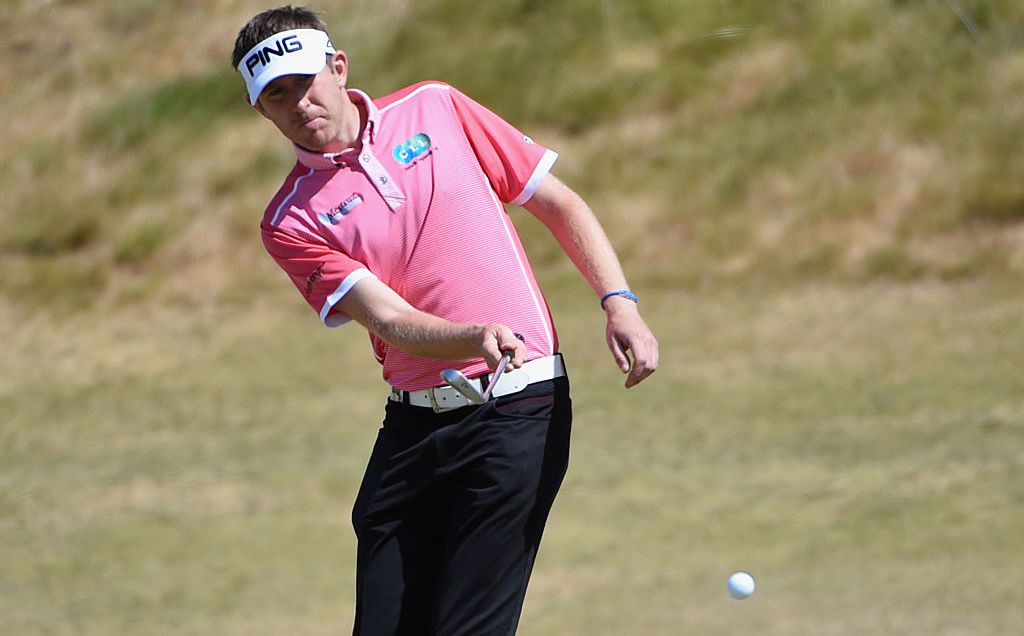
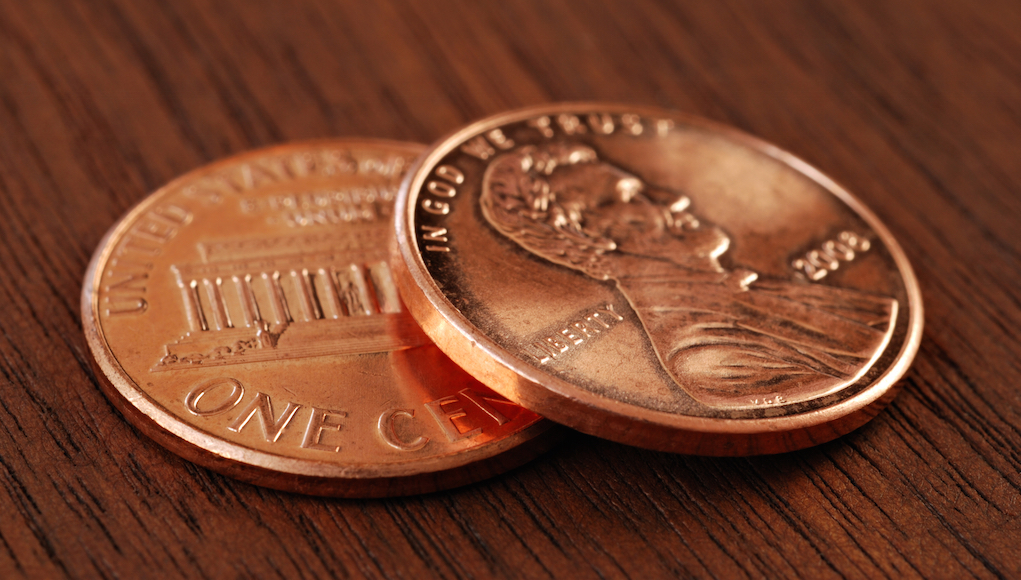
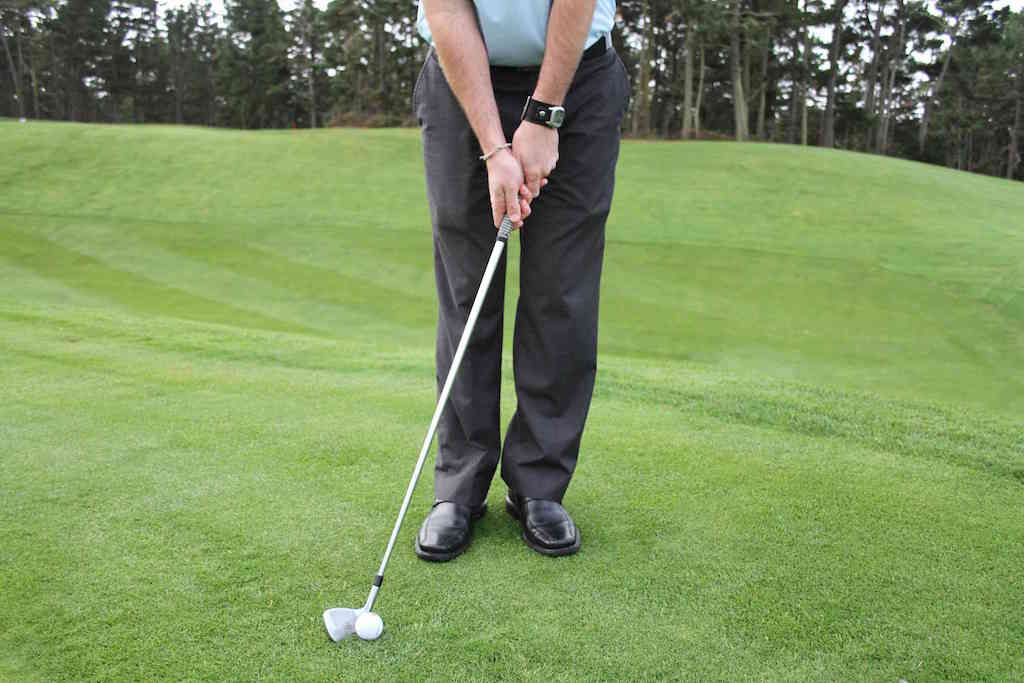
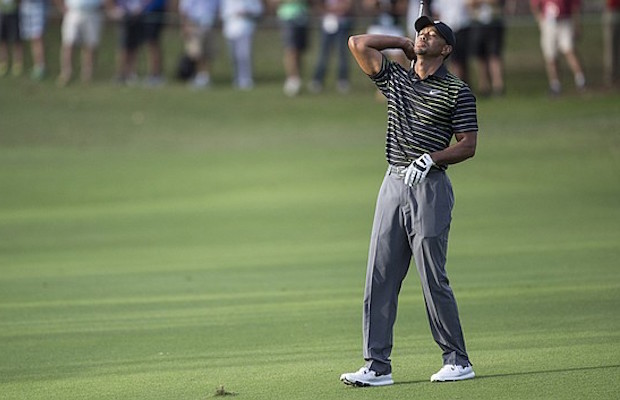
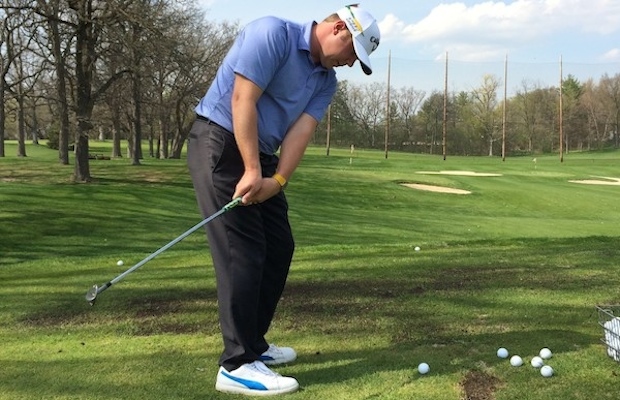














Jim F
Sep 23, 2013 at 6:13 pm
Hello
hopefully you can provide some help.
I am an 11HDCP trending to 13 due to chipping “yips”.
I have no problem when I practice, but when I am playing a serious round, for the last month of 10 rounds I have developed a challenge where I basically shank my chips quite frequently. The ball will shoot out low and rather severely to the right. (I am right handed)
I have never experienced this in the 20yrs I have been playing and don’t know how to get back to where I was. A very decent chipper.
Thanks!
Andy
Apr 24, 2013 at 2:13 pm
Great tips – I really need to spend more time working on chip shots at the start of each season. This is always the area that requires the most “touch” for me.
Dennis Clark
Apr 24, 2013 at 5:31 pm
If you vary the clubs you’ll find your touch gets better. SAME stroke, different clubs; try it!
Andy
Apr 26, 2013 at 10:24 am
Will do – thanks!